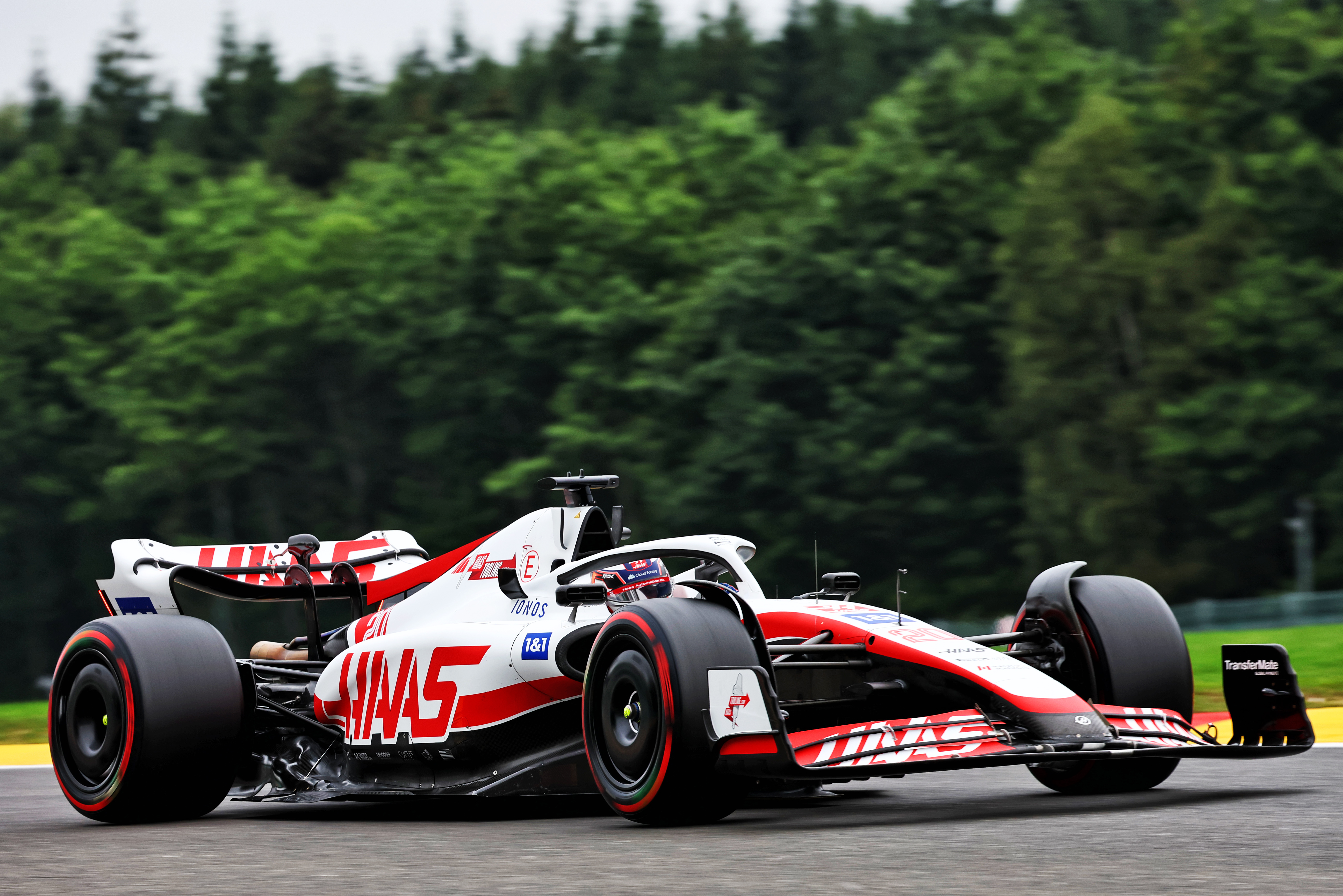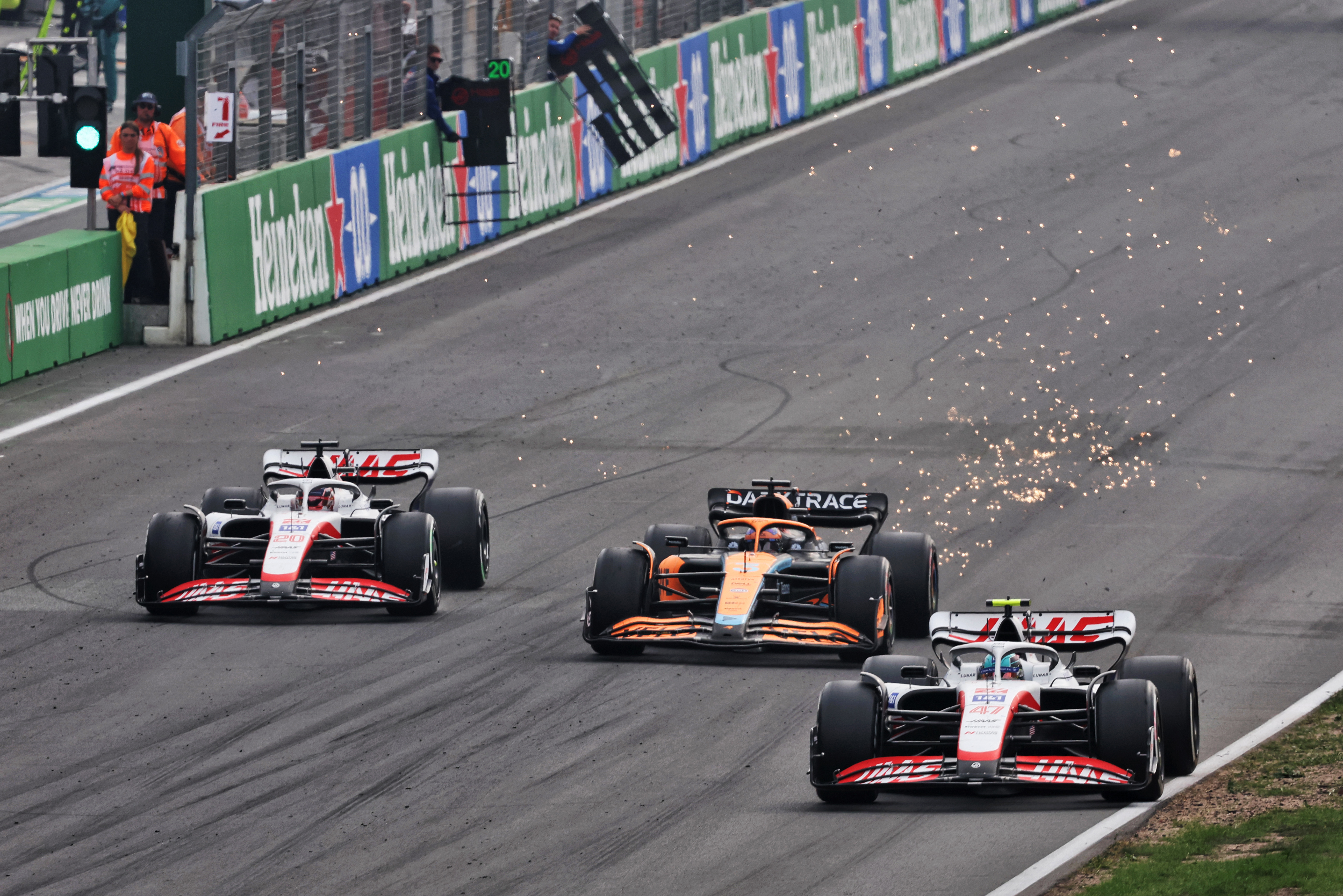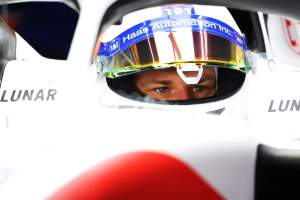Up Next

Haas came back into respectable contention this season, having effectively sacrificed the 2020 and ’21 seasons as placeholders while it awaited the opportunity provided by the new regulations. It no longer invariably propped the rest of the grid up and returned to something more like the competitive level it had previously enjoyed.
But from the perspective of a car which could regularly make Q2 and occasionally Q3, just eight points finishes (with a total score of 37, for eighth in the constructors) must count as slightly disappointing.
The results didn’t do full justice to the Ferrari-powered and influenced VF22’s competitiveness, largely because the team’s still-small budget didn’t allow for any significant development and because the second car, driven by Mick Schumacher, scored only twice amid a series of expensive accidents.
Kevin Magnussen starred in wet qualifying – fourth in Imola, fifth in Canada and pole in Brazil – but on all three of those occasions was subsequently involved in contact with other cars on days when big points looked achievable.
Visually the car was clearly related to the Ferrari, which was unsurprising given that not only did it share all the major hardware – power unit, gearbox, suspension, cooling system, brakes – but was created from Haas’ enclave within the Ferrari factory by a team of designers and engineers, several of whom are on secondment from Ferrari, including technical chief Simone Resta.

So the VF22 had conventional pushrod front/pullrod rear suspension, the potent new Ferrari 066/7 power unit and wide out-washing sidepods housing radiators mounted low and far forward within them.
Another key feature was the relatively long distance between front axle and the beginning of the sidepods, something which it shared with all three of the big team’s cars and which is believed to have turned out to be a key in adequately controlling the airflow around the front tyres into the inlets for the venturi tunnels.
The hard points of the car’s design – as defined by the Ferrari’s layout – ensured it was ideally configured to be aerodynamically sound in a season of all-new regulations when it would potentially have been easy for a small team to start off from the wrong place.
The car was generally more competitive in the first half of the season than the latter, highlighting its very modest development programme.
Only a single big update went on the car – a total floor reworking which was on from Hungary just before the summer break. It made a difference, but the constant development from such as Alpine and McLaren – two teams which it had outqualified in the opening race of the season – left it well behind. Even the team’s range of wings was unchanged between the beginning of the season and the end.

As an average, it was around 1.6s off the Red Bull pace, faster only than Aston Martin and Williams, even though it began the season less than 1s off pole. Like the Ferrari, it had a reasonable set-up window and unlike rivals such as the AlphaTauri and McLaren, there was no underlying imbalance.
It simply fell steadily further away from others in the competitiveness of its downforce. Another trait it shared with Ferrari – that of quickly getting heat into its front tyres – proved invaluable in Brazil qualifying.
There, a tiny window of slick tyre running at the beginning of Q3 was all Magnussen needed to stick the car on a shock pole position for the Sprint race, a first for both KMag and the team. The Ferrari’s ducting system within the cake tin of the front wheels – and therefore the Haas’ too – played its part in generating that first lap front tyre temperature. Unlike Ferrari, Haas got Magnussen to the front of the pitlane queue fitted with the correct tyres. Magnussen’s great confidence under braking did the rest.
Sadly, Magnussen was a first-lap retirement in the main Sunday event, taken out by Daniel Ricciardo. This was especially unfortunate given K-Mag’s race-ruining clashes with Lewis Hamilton on the opening laps of both Spain and Canada. That said, Magnussen’s return was hugely popular within the team and gave it much-needed direction. The race ops improved noticeably when hugely experienced engineer Mark Slade was recruited late season to work with K-Mag.
Team boss Guenther Steiner reckons the sponsorship and FOM payments combined will allow the team to actually nudge the budget cap next season, so further recovery shouldn’t be ruled out.






